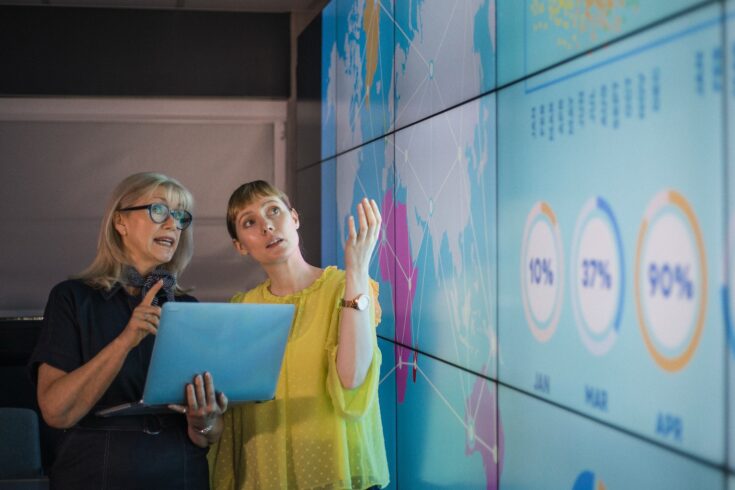ERC ecosystem turns ideas into business opportunities
High risk ideas that can pay dividends in business can be difficult to find and even harder to nurture until they are mature and ready to prototype, test and adopt.
The ERC programme has proven over the years to have a good eye for business, even though it’s focus is purely on excellent research ideas regardless of application.
World renowned experts have awarded over 10,000 ERC grants to people for excellence in their field, and groundbreaking ambitions for their research project.
ERC grant holders are proven high achievers with a recent report finding 80% of ERC projects have produced scientific breakthroughs or major advances.
It is less well known that a growing number of these projects reach beyond academia. They form new ecosystems connecting industry with practical opportunities to turn ideas nurtured by the ERC into new successful products and services.
The report found that almost half of ERC projects are already impacting:
- the economy
- society
- policy making.
In addition, around two thirds are expected to make this impact in the medium to long term.
How can ERC funding nurture opportunities for business?

Credit: Orbon Alija, E+ via Getty Images
Did you know that the first effective COVID-19 vaccine, brought to market in just 11 months, was nurtured by ERC funding? The BioNTech CEO Uğur Şahin had academic freedom and large-scale funding from ERC to boost his research into cancer vaccines.
He is the first to admit that mRNA cancer vaccines are considered impossible or too risky by many. However, that hasn’t stopped ERC supporting Şahin’s persistent curiosity.
His grant put him in the position to adjust quickly to the pandemic with a new type of vaccine. This innovation generated an estimated revenue of €1.7 billion and saved countless lives.
What funding is available in the ERC commercialisation ecosystem?
Industry can harness the innovation potential of ERC funded ideas, data and technology by being part of the project. The ERC Proof of Concept scheme provides additional funds to existing grant holders. It is designed for a quick turnaround, so that commercial potential can be kindled while it is still at the cutting edge of science.
More recently, the ecosystem has grown beyond the ERC. Newly launched funding schemes such as the European Innovation Council (EIC) are bigger and even more focused on commercialisation.
The clue in the name of this funding agency, established in 2021, shows it was partly modelled on ERC’s success. It has similar expert leadership and a clear call for applicants to be ambitious. But EIC is evolving its own specialism for innovation, that makes for strong synergy between the opportunities these agencies offer.

Credit: amenic181, iStock, Getty Images Plus via Getty Images
The EIC Transition programme takes the results of research and ramps up the support towards innovation. This makes it a natural step after an ERC Proof of Concept grant.
ERC grants are well suited to business development. More than half of EIC Transition’s first round of €99 million funding going to former ERC Proof of Concept projects.
How frontier science becomes a commercial prospect
Chip NanoImaging use ERC and EIC grants as stepping stones to transform ideas into market ready, low cost nanoscopy technology. This could be a gamechanger for researching viruses and cancers.
The five-year ERC project cultivated untested technology in 2014, led by Balpreet Singh Ahluwalia and hosted at the Artic University of Norway.

Caption: Liver cell, standard resolution and Chip NanoImaging super resolution. Credit: Chip NanoImaging AS
Soon enough commercial potential sprouted, which brought in two additional ERC Proof of Concept grants, Nano-Chip and ChipNano.
ChipNano has matured into an established commercial company with equity investment. It is now leading an EIC Transition project, with nearly €2.5 million to produce photonic chip based optical microscopes for market.
Opportunities offered by the ERC-EIC ecosystem are not limited to hardware. ERC grants fund frontier research from any discipline, which means they have also created value for the service economy.
Robert Klassen drew on, “interdisciplinary educational and occupational psychology frameworks to develop an evidence-based teacher training selection approach” in his ERC project, Selection.
This has proved to have real world applications, as well as being evaluated as excellent research about the human mind and its complexity. Klassen secured ERC Proof of Concept funding to explore which kind of commercial platform would be best suited to commercially leverage this cutting edge understanding of the soft skills and psychological traits associated with effective teachers.
Teacherselect already offers evidence-based services and software products. Schools or local authorities could buy them to solve costly, time-consuming problems of recruitment and retention.
How industry can benefit from European Research Council funding
Industry and other non-academic organisations can benefit from the ERC by:
- Getting involved in a proposal for EIC funding: lead or join a team working on turning frontier science into innovation. Contact Innovate UK’s EIC National Contact Point (NCP) for support. Alternatively, contact the Innovate NCP for your industry sector for broader Horizon Europe support.
- Creating a company or partnering with a grant holder, as was the case for Chipnano. An independent review found that 26.3% Proof of Concept grants either created a company or had a pre-existing company involved.
- Striking licensing deals, as Teacherselect is exploring. This gives industry a stake in valuable intellectual property generated by ERC projects. If there is additional Proof of Concept funding involved the chances of new business, licensing agreement or company being created nearly doubles. A business can even use intellectual property from an ERC grant holder under license to apply for EIC Transition funding themselves.
- Host an ERC project at an industry organisation.
Further information, help and support
You can visit the UKRO website
You can connect with Sean Rowlands on LinkedIn
Follow UKRO on Twitter
Subscribe to the UK Horizon Europe newsletters
Find out the latest on the UK’s association to Horizon Europe and funding support during the delay to association
Follow Innovate UK on Twitter
Connect with Innovate UK on LinkedIn
Follow Innovate UK on Facebook
You can go to the new Innovate UK website
You can go to the Innovate UK EDGE website
Subscribe to our YouTube channel
Sign up for our email newsletter
Top image: Credit: SolStock, E+ via Getty Images




